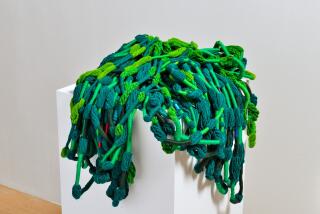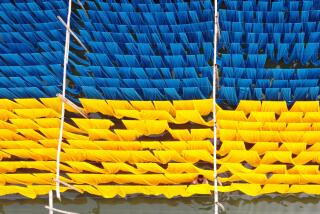AROUND HOME : Indigo Textiles: Technique and History
- Share via
THIS IS NO less than a world tour of blue, which was not accidentally the color of power and royalty for centuries. It was everywhere: Druids painted their bodies with a version called woad, while in China, India and Egypt, fine clothes were dyed with other varieties of indigo plants, all rendering a color that lasted hundreds, even thousands, of years. This fastness is what made indigo so desirable, but the techniques used to turn plants into dye are so complicated one wonders how the ancients ever figured it out. The plants have to be fermented, which produces an enzyme that is insoluble until treated with an alkaline reduction. Once the fabric is removed from the dye bath, oxidation turns the dye back into its original insoluble state, making it colorfast.
Sandberg is a Swedish teacher, author and textile expert, so the book also has thorough instructions for various dyeing methods--batik, tie-dying and resist printing, all within the context of their geographical origins. Still, you don’t have to be a textile professional to appreciate this handsomely illustrated book. ($22.95)
More to Read
Sign up for The Wild
We’ll help you find the best places to hike, bike and run, as well as the perfect silent spots for meditation and yoga.
You may occasionally receive promotional content from the Los Angeles Times.





